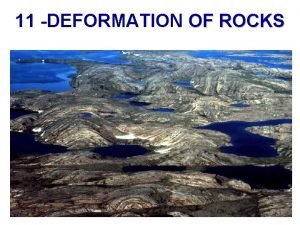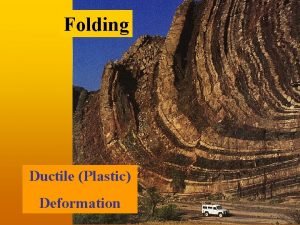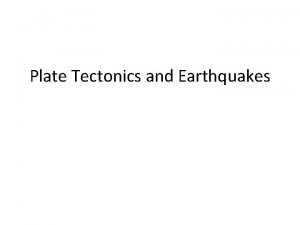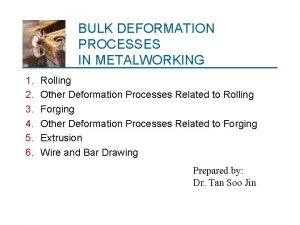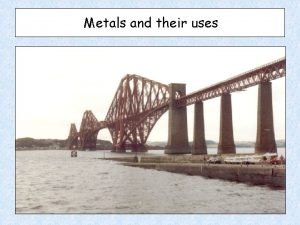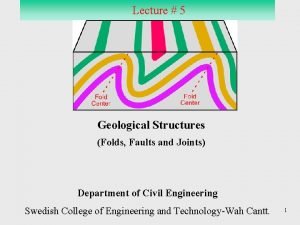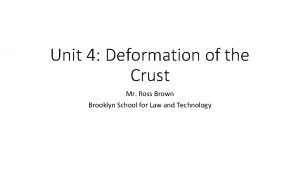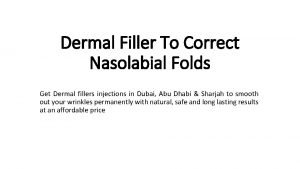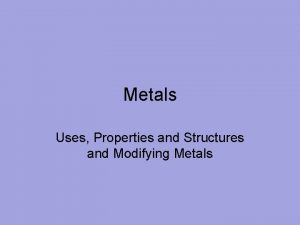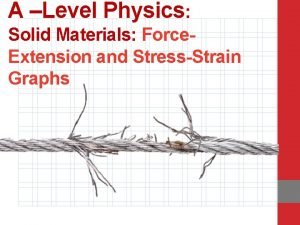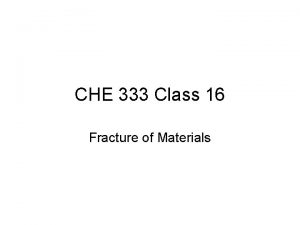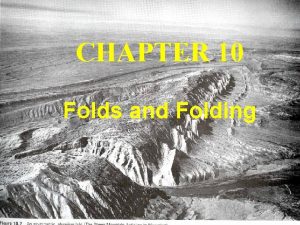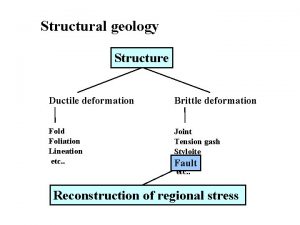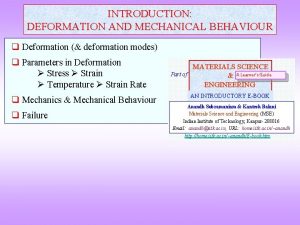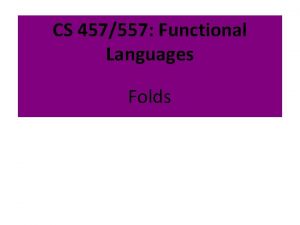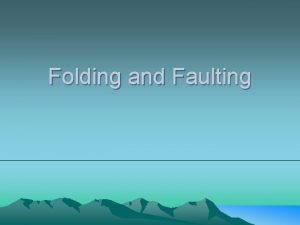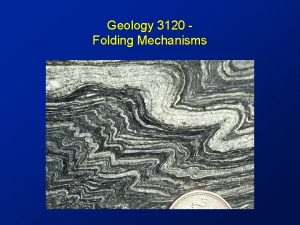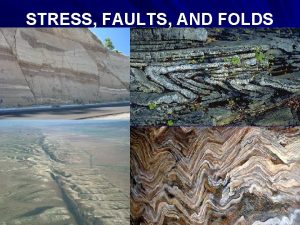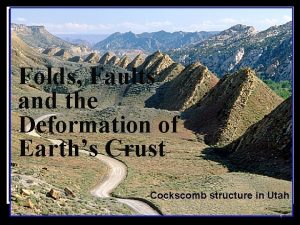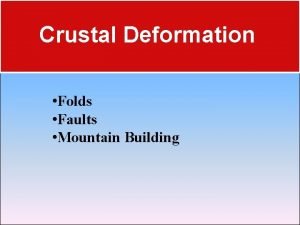Folds and folding In Ductile processes deformation is


























- Slides: 26

Folds and folding In Ductile processes, deformation is retained. Plastic if permanent strain increases at same stress

Some types of folds

Folds and Folding

Folds and folding

Convexity and Age of Beds • Anticline - a fold that is convex in the direction of youngest beds • Syncline - a fold that is convex in the direction of oldest beds

Folds - Definitions Antiforms are anticline-shaped folds (convex-down) whose stratigraphic order has not been determined. • Synforms are syncline-shaped folds (convex-up) whose stratigraphic order has not been determined. • We apply these terms to any fold in which facing direction and/or stratigraphic order is unknown or uncertain. • • Determining is up! stratigraphic succession - which way

Direction of Fold Closing inflection point - change in curvature (i. e. , concave to convex)

Folds - Definitions Overturned folds are those who have a limb that is upside down, it has rotated beyond vertical, i. e. dipping past 90 o from its original horizontal position°. •

Folds - Geometric Properties • The most basic element of a fold is the folded surface • We usually describe folds in normal profile view as seen by looking down the fold axis or down plunge.

Folds - Geometric Properties In normal profile view, folded surfaces can be divided up into limbs and hinges. • • Hinge: Region of Greatest Curvature If the hinge is sharp, that point is called the hinge point otherwise it is called a hinge zone. • Fold limbs commonly curve, and the location where segments of opposite convexity join is called the inflection point. •

Folds - Geometric Properties The hinge line of a fold is defined by successively connecting the hinge points of the fold. • The orientation of the hinge line is recorded as a lineation (plunge (angle) & trend (compass direction)). Hinge lines are typically not straight and their orientations can vary considerably. • Multiple hinge points along a single folded surface, taken together, define a hinge line. The orientation of a folded surface can be defined by the orientation of a hinge line, using plunge & trend.

Folds - Geometric Properties To establish the orientation or attitude of a fold, it is necessary to know its hinge orientation and the orientation of the axial plane or axial surface. • The trend and plunge of a hinge line of a fold does not uniquely define the orientation of the fold Folds with the same hinge line

Same hinge line direction Same axial surface We need more information to distinguish these, maybe orientations of the limbs

Folds - Geometric Properties The axial surface of a fold connects all the hinge points in all successive layers. • • It may be planar - an axial plane, or a curviplanar surface - an axial surface.

Determining the Fold Axial Surface

Determining the Fold Axial Surface

Folds - Hinge lines & Axial Surfaces Hinge lines are lines described by a lineation that lies on the axial surface, which is itself described by local strike and dip. Axial surface - Surface created by the hinge lines of consecutive layers within the fold area - it may be planar or curved. Described by strike and dip

How can we measure the axial surface? § We can measure its dip direction and the angle of dip § Strike can always be determined by remembering that strike is perpendicular to dip

Profile Plane of a Fold

Interlimb angle “fold tightness”, four categories

Angularity of Interlimb Angle

Attitude of Axial Surface

Cylindrical or Non-Cylindrical Folds

Stratigraphic Facing Graded Bedding

Parasitic Folds

Vergence Parasitic folds Give us information about sense of shear on the fold limbs as well as the location of larger-scale fold hinges. Think of S and Z folds, their asymmetry will give a sense of rotation, when viewed down plunge.
 True vocal folds and false vocal folds
True vocal folds and false vocal folds Thrust fault
Thrust fault Horizontal
Horizontal Deformation
Deformation Stress strain curve toughness
Stress strain curve toughness Bulk deformation processes
Bulk deformation processes Pengantar teknik mesin
Pengantar teknik mesin Wholesale sheet metal forming
Wholesale sheet metal forming Surface hardening process
Surface hardening process Bulk deformation processes
Bulk deformation processes Bulk deformation process
Bulk deformation process Deformation processes include which of the following
Deformation processes include which of the following Concurrent processes are processes that
Concurrent processes are processes that Strain formula
Strain formula Brass vs bronze
Brass vs bronze Brittle fracture vs ductile fracture
Brittle fracture vs ductile fracture Faults and folds
Faults and folds Anterior and posterior axillary folds
Anterior and posterior axillary folds Make your own folds and faults
Make your own folds and faults Anticline and syncline folds
Anticline and syncline folds Nasolabial filler
Nasolabial filler Ductile vs malleable
Ductile vs malleable Brittle or ductile
Brittle or ductile Ductile material force extension graph
Ductile material force extension graph American ductile iron
American ductile iron Ductile iron fittings
Ductile iron fittings Definiton of ductile
Definiton of ductile

